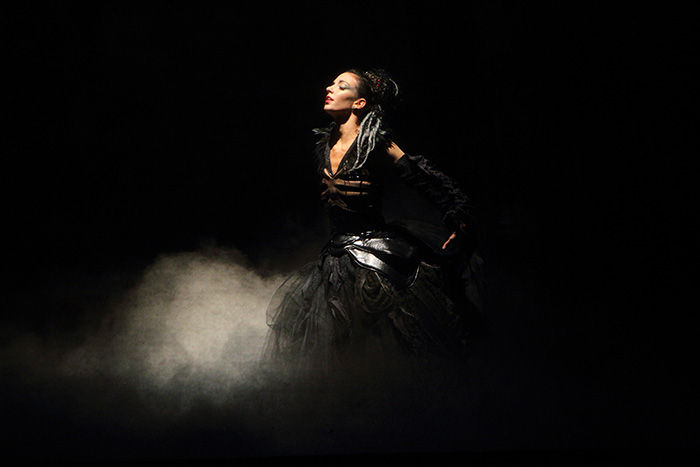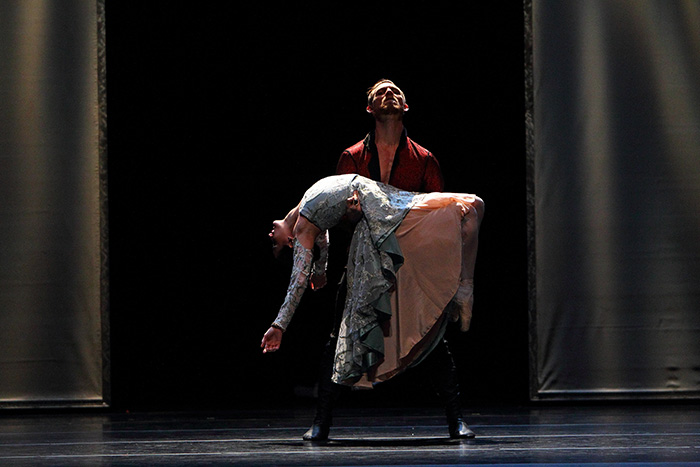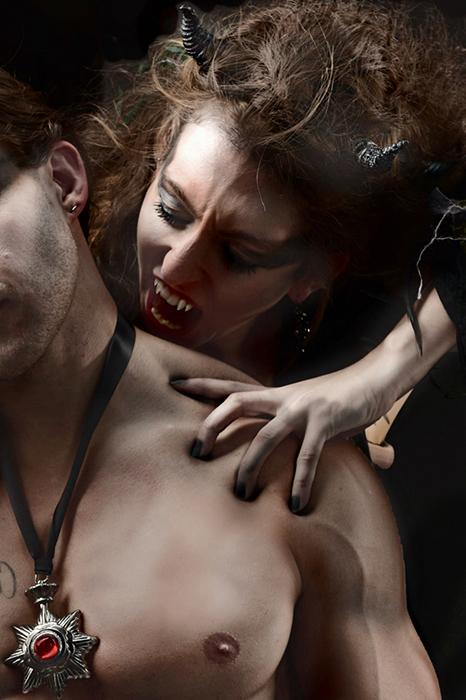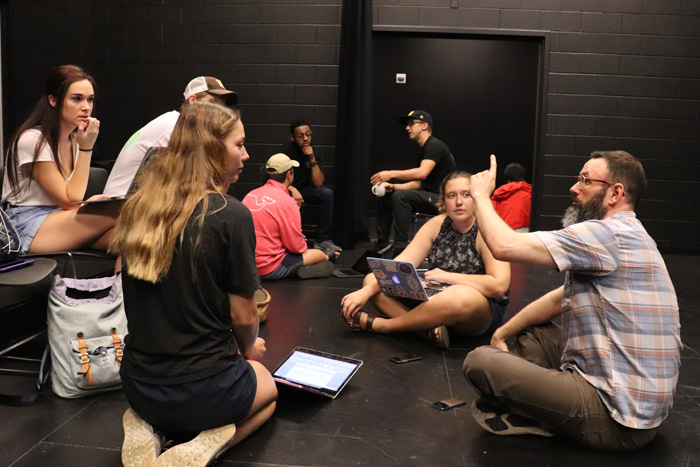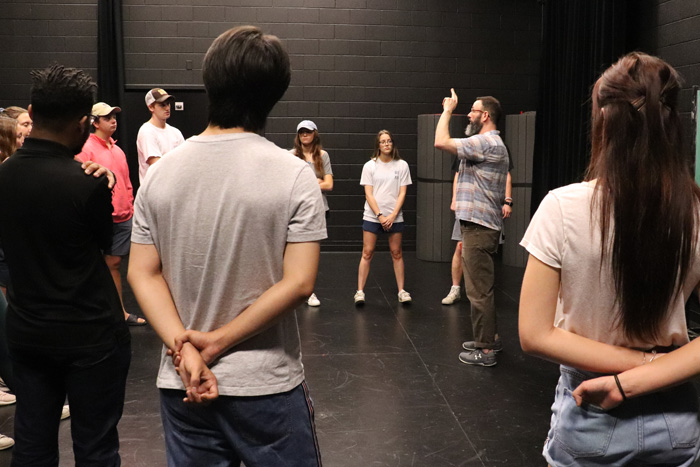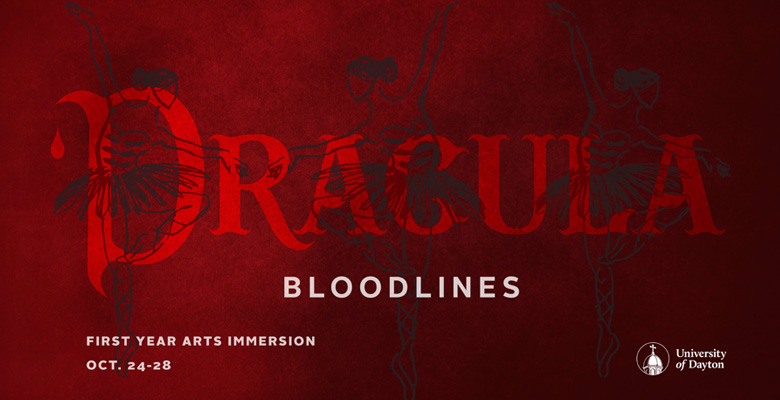College of Arts and Sciences Newsroom
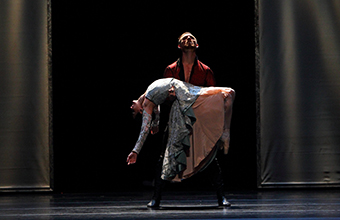
Power and Vulnerability
University of Dayton faculty and students are sinking their teeth into this year's Humanities Commons theme, “power and vulnerability,” inspired by the Dayton Ballet's October performances of Dracula: Bloodlines.
More than 2,700 students will attend Dracula: Bloodlines performances Oct. 25-28 at the Victoria Theatre in downtown Dayton for the University’s 2018 First-Year Arts Immersion event. Choreographed by Dayton Ballet Artistic Director Karen Russo Burke, the original ballet explores the transformation of a 15th-century prince into the legendary vampire.
Faculty are using the Dracula myth, as well as the power and vulnerability theme, in the introductory English, history, philosophy and religious studies courses that comprise the Humanities Commons — a connected set of courses that encourage students to consider a range of disciplinary perspectives to answer the question: “What does it mean to be human?”
Or, in Dracula’s case, inhuman.
“By connecting these disciplinary perspectives, students gain an enriched understanding of the many ways that this question can be answered and the ways in which these disciplines can help them to live their lives more fully,” said Aili Bresnahan, assistant professor of philosophy and Humanities Commons coordinator.
The Humanities Commons creates a foundation for learning in the rest of the University’s Common Academic Program, which calls on students to integrate what they learn by requiring them to take courses that intentionally cross disciplinary boundaries and incorporate relevant non-classroom experiences.
Now in its sixth year, the arts immersion is a partnership with the Dayton Performing Arts Alliance that invites Humanities Commons faculty to incorporate specific themes and ideas related to the arts event into their classrooms.
“Since the arts are another rich source for exploring our place in the world and our own humanity, humanities faculty embrace the opportunity to bring their students to an arts performance specifically chosen to engage the questions being raised in textbooks and class discussions,” Bresnahan said.
Dracula: Bloodlines draws from both Bram Stoker’s Dracula and the Lilith story from Jewish theology. Department of English faculty are using Stoker’s 1897 novel and other texts from that period in the classroom, while Department of Religious Studies faculty are exploring the Lilith legend with students.
Humanities faculty also have organized a number of fall semester campus events tied to both the arts immersion event and the power and vulnerability theme. The latter calls on students to reflect on humanity at both its best and worst.
“Students can connect this idea to their own lives, considering such dynamics as brute force, coercion, wealth, advantage and other attributes that can lead to dominance of one group over another in their personal, business and other relationships,” Bresnahan said.
A vampire-themed film series for students and faculty during September and October features commentary by Bresnahan, Department of English faculty Jim Farrelly and Bryan Bardine, and Department of History faculty Todd Uhlman. Films are shown at 7 p.m. Wednesdays in the Jesse Philips Humanities Center’s Sears Recital Hall. Bram Stoker’s Dracula was shown Sept. 20; Interview with the Vampire and The Lost Boys will be shown Oct. 10 and Oct. 17, respectively.
A panel on the Lilith story and Jewish women in popular culture will be presented at 3:35 p.m. Tuesday, Oct. 9, in Sears Recital Hall by Department of Religious Studies faculty Dustin Atlas and Department of English faculty Masha Kisel.
“The Lilith story connects to Bloodlines because, I believe, Lilith is presented as Dracula’s progenitor,” Atlas said. “It relates to first-year religious studies because Lilith presents us a case where text interpretation is used to make sense of, and tame, a more popular figure.”
Department of History faculty Natalie Sherwan and Anca Glont will present a panel on the historical context of Vlad the Impaler, the Wallachian prince who inspired Dracula, and on vampires in Romanian folklore at 1:25 p.m. Monday, Oct. 15, in Sears Recital Hall. Sherwan and Glont are both natives of Romania.
In September, seven Humanities Commons classes participated in a series of power dynamics-related applied theater immersion experiences staged by students in assistant professor Jerome Yorke’s Acting for Everyone classes. Yorke’s students led participants through structured improvisational game scenarios intended to make them feel what it means to have, lose and transfer power.
“My hope is when students go see Dracula: Bloodlines, they will think back to their experience here and say, ‘Oh, now I understand even more about how the arts can communicate various aspects of power and vulnerability through this experience and through the research that I did,’ so that they then go into the real world understanding these themes,” Yorke said.
Students are encouraged to dress in vampire costumes for the Bloodlines performances. Student bus transportation from Lot C to the Victoria Theatre will be provided. Food truck rallies at Courthouse Square will precede the 3 p.m. matinee performances on Saturday, Oct. 27, and Sunday, Oct. 28.
The First-Year Arts Immersion is sponsored by the College of Arts and Sciences, the Office of the Provost and the Office of the President. Past arts immersion experiences included Dayton Ballet’s performance of Romeo and Juliet; Dayton Opera’s productions of The Consul and Dead Man Walking; and Dayton Philharmonic performances of The Garden of Cosmic Speculation and The Rite of Spring.
For more information, please visit the arts immersion website.
- Dave Larsen, communication coordinator, College of Arts and Sciences

